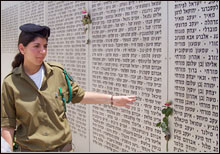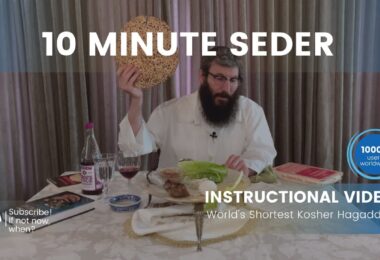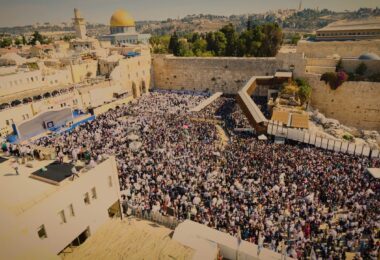

At 8pm tonight the first siren went off, enjoining us to remember, for two minutes, all those who have fallen in the fight to establish and preserve this country, from pres-state resistance to the 138 members of the IDF we lost this year. It is hard to even attempt to do their memory honor without sounding trite. All I can say is that from the bottom of my soul I am thankful. May the mothers and widows, siblings, fathers and friends of those who have fallen find some peace. May none of us ever take the price that has been paid to walk these streets for granted.
There are endless stories of drama, heroism and anguish to be told of the sacrifices made. Within my first week in Israel, sitting in the Old City, I was told the following one, which has remained with me ever since.
———–
Sixteen hundred Jews, mostly the elderly and families with children, protected by barely two hundred fighters; the odds for the Jewish quarter of the Old City of Jerusalem in 1948, were beyond impossible. The Jordanian Legion, by far the best fighting force in the Middle East, committed an entire division of 3,200 men, their most elite fighting force, to win this battle. Approximately 30,000 Arab irregulars, local Arabs with a gun and a cause, supported them; the Jews were in desperate straits.
There were no reinforcements to be had, but the Israeli fighters, against all odds, refused to give up. They had only three heavy machine guns between them, and one of them was positioned in a sandbag position on the edge of the Churvah Synagogue, a stone’s throw away from the Arab shuk. Sitting at the strategic juncture of the widest alleyway into the Jewish quarter, the Jordanians mounted daily and often twice-daily attacks, in full battalion strength, against this three-man Israeli machine-gun position.
Because of the strategic sensitivity of the position, the three men posted there were given very specific orders: they were not allowed to leave the position under any circumstances unless someone came to relieve them. As such, a runner who would dash between the positions avoiding the Jordanian snipers, brought their meals to them.
One afternoon, the men manning the position realized that their lunch had not arrived. With no radio, and no way to contact the runner, they had no option other than to wait and hope their lunch would arrive sooner rather than later. But, as the afternoon wore on and the sun sank lower on the horizon, they began to worry as a myriad of thoughts and possibilities assaulted them. What if the Jordanians had somehow circled around behind them and cut them off? What if the positions behind them had already been over-run?
Finally, as darkness approached, one of them decided to venture out into the street and see if he could get a better picture of what was going on. And that was when he discovered Nissim Ginni, the youngest Israeli soldier ever to fall on active duty.
Hit by sniper fire not ten yards from where they were sitting, Nissim, a runner whose mischievous grin and flashing eyes had shored up the men on the most desperate occasions, was only ten years old.
The most puzzling part of his death was that he had been hit in the stomach and quite obviously bled to death. A stomach wound is an extremely painful injury, and very often the loss of consciousness in such circumstances is relatively slow. All of which left the men wondering why Nissim had not at the very least called out to them and asked for help. They were, after all, close enough that they would most certainly have heard his cries and been able to come to his assistance.
The theory was that Nissim understood what calling out to his comrades would have meant. Sniper fire is the most surreal type of warfare; you don’t realize at first what is happening, because with all the normal noise of warfare, and the distance of a good sniper, you don’t even hear the shot. In the movies, you always know there is a sniper because of the music; but in real life there is no music: most often, by the time you comprehend that you are under fire, it is too late. Realizing that if he cried out the men would come to his aid, Nissim Ginni, a ten-year-old boy, chose to bleed to death all alone in an alleyway, rather than risk the lives of his comrades.
————-
The story was told by Rav Binny, and can be found here. Following the story you just read is a divar torah about whether the price we pay for this land is justified, and the paradox of sacred space.
- Shabbat in the Uttermost West - 2/25/2007
- The chosen books of the chosen people - 2/18/2007
- Why Not Al? - 2/15/2007





